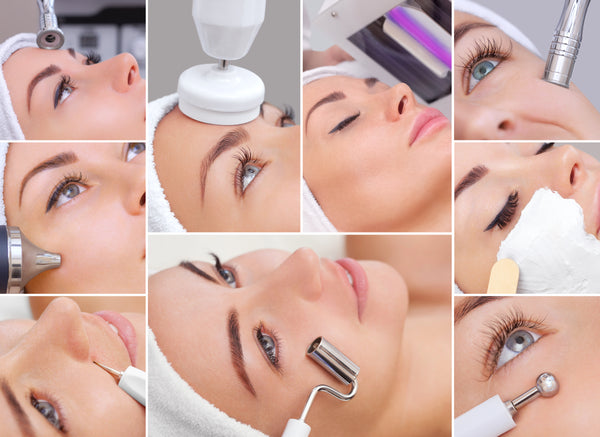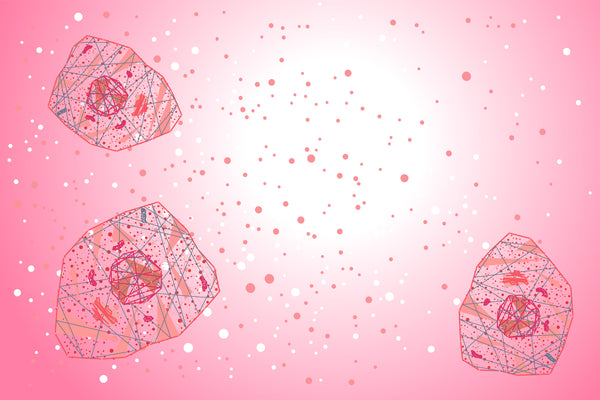WHAT ARE STEM CELLS?
A cell is the smallest unit of life that makes up all living things. Cells are the building blocks of the body that carry out specific functions. They heal, repair and reconstruct the body. We have approximately 200 different types of cells and 30 to 40 trillion cells in the body. Stem cells are where all other cells are produced and given specialized functions. They are the only cells that have the ability to differentiate into one or more cell types. Stem cells divide to form daughter cells, which either become a new stem cell or a specialized cell with specific functions such as blood cells, bone cells, skin cells, etc.
Think of youthful stem cells like young people choosing their careers as they get older; outside influences like geography, upbringing and family needs may push them toward a certain career path. The same thing happens with undifferentiated cells; they are influenced by external cues such as cell signaling, environment and body needs. Each cell in the body uses the same DNA; however, specialized cells only use the parts of the DNA needed for that particular cell. For example, a skin cell would only express the genes needed to form a skin cell. Stem cells continuously repair damage by sending messages. As we age, stem cells decrease and produce less cell-signaling proteins.
TYPES OF STEM CELLS
The most versatile type of stem cell is the totipotent cell. A totipotent cell can turn into any type of cell needed, including the placental cells. Totipotent cells are embryotic cells that are only present during the first few cell divisions. An example is a fertilized egg also known as a zygote.
Human cells are only totipotent until the zygote becomes a blastocyst. Once the blastocyst is formed, the cells are then pluripotent; these cells are also like blank slates and can become any type of cell the body needs. The only thing pluripotent cells cannot do that totipotent cells can do is form an embryo and turn into a human.
Pluripotent cells give rise to adult cells which can either be multipotent or unipotent. Multipotent cells come from bone marrow, fat, umbilical cord and placenta; these cells can create multiple types of cells but are more limited than pluripotent cells. Unipotent stem cells can only produce cells of the same type. A skin cell is an example; it is capable of cell renewal but can only make more skin cells.
STEM CELL USE
Stem cells are used in medicine for a variety of reasons.
Disease research. First, they can be studied to better understand how diseases develop. Researchers can learn how to treat or prevent disease from watching how stem cells turn into specialized cells.
Medication testing. They can also be used in labs to test new medications for specific areas of the body. For example, a stem cell could be programmed into making a cardiac cell to test a new heart medication.
Body repair. Stem cells can also be guided to become specific cells that can be used to regenerate or repair damaged tissue including cartilage, tendon, bone, skin, etc. This ability to regenerate and repair makes the use of stem cells a great option for many medical conditions including Parkinson’s, multiple sclerosis, irritable bowel syndrome, crohn’s disease, ulcerative colitis, heart disease, stroke, Alzheimer’s, wound care, many auto-immune conditions, rheumatoid arthritis, cancers and more.
Esthetic medicine. Stem cells in esthetics are used to rejuvenate the skin, as well as for hair restoration. When used for esthetics in the clinic, the stem cells are typically taken from the patient’s own body, which is called autologous. These are preferred as there is little chance of the body rejecting them. Allogeneic stem cells come from a donor, which may be needed with medical treatments when the body’s own stem cells can have a risk of reinfection with a disease, for example in the case of leukemia. Stem cells are injected into the sub-dermis of the skin to reduce wrinkles, even skin texture and reduce scarring. They can also be placed into the scalp to rejuvenate hair follicles and trigger the growth of new cells.
Skin care. There are also several topical products on the market that use stem cells to create their product; however, the entire stem cells are not used. Rather, it is the conditioned media that is used. Conditioned media is the substance that the stem cells are grown in. It contains vital proteins including cytokines, growth factors and exosomes, which are said to be the beneficial parts of the stem cells.
EMBRYONIC STEM CELLS
The use of embryonic stem cells brings up ethical issues, since the embryo is already formed. Embryonic stem cells come from embryos that are three to five days old. The embryo has about 150 cells at that point and is called a blastocyst. These cells are pluripotent, which means they can divide into more stem cells or become any type of cell in the body. They are typically donated by fertility clinics and then multiplied in a lab, not inside the mother’s womb. Some clinics and product lines use non-embryonic stem cells which are from the eggs that have not yet turned into embryos. These are also donated by fertility clinics with donor permission. At days five to six, the embryonic stem cells start to specialize, which means they are no longer pluripotent.
ADULT/ SOMATIC STEM CELLS
Adult stem cells, also called somatic stem cells, are either multipotent or unipotent. Mesenchymal stem cells are the type of adult cells used most often in the medical and esthetic industries because they are multipotent. These cells are derived from bone marrow, adipose tissues and umbilical cords. The stem cells can be harvested with a blood draw, liposuction or bone marrow extraction. Multipotent cells mature and differentiate into many specialized cells. They are involved in natural healing and do not have a negative immune response in the body. Mesenchymal stem cells can form skin, muscle, bone, blood, heart, etc.
Bone marrow stem cells are touted to be the best of the mesenchymal cells, since they are the only mobile stem cell looking for injury. Bone marrow stem cells are known to reduce inflammation and are naturally healing. They are usually sourced from younger patients, and they tell the skin cells to behave the way they did when they were younger. The stem cells are extracted from patients, then isolated and sent to a lab for culturing. In the lab, they put the cells in a petri dish with a substance full of nutrients needed for them to thrive, grow and multiply. They create an environment similar to that of the body so the cells can talk to each other through cytokines and growth factors. It is the substance that the stem cells grow in that is used in topical products.
Adipose-derived stem cells are of the most used in topical preparations.1 Fat tissue is rich in stem cells and are more abundant than other types of mesenchymal cells. There are less ethical issues since the cells they are taken from the fat discarded from liposuction patients. There is some controversy about using adipose-derived stem cells since fats are inflammatory in the body, and the goal of anti-aging is to control inflammation. However, there is some research that says adipose stem cells are better and that bone marrow stem cells can cause inflammation.Display footnote number:2
As stated above, it is not the stem cells that are used in topical products, it is the conditioned media. This conditioned media contains cell-signaling proteins which are now thought to be responsible for all the benefits from the stem cells.
CYTOKINES
Cytokines are small proteins that are important for cell-signaling. They are secreted by a variety of cells including dendritic cells, T-cells, B-cells, fibroblasts, macrophages and mast cells. They bind to cytokine receptors on the surface of other cells and send immune messages to the nucleus to carry out an action. Cytokines include interleukins, lymphokines, interferons, chemokines, growth factors and many more. They are known for their anti-inflammatory properties. Cytokines are responsible for cell growth, differentiation, apoptosis, morphogenesis, metabolism and wound healing.
GROWTH FACTORS
Growth factors are a type of cytokine that promotes cell survival, cell proliferation and cell differentiation. Growth factors are naturally occurring proteins or steroid hormones that are part of cell-signaling. Growth factors help with the growth of specific tissues and wound healing. Growth factors signal cells in the extracellular matrix to produce more collagen and elastin. For example, platelet-derived growth factor (PFSD) is released from platelets and binds to the PDGF receptors on fibroblasts, signaling them to grow.
EXOSOMES
Exosomes are extracellular vesicles made within the cell that are also responsible for intercellular communication. They are released naturally from virtually every cell type. They are found in most biological fluids influencing immune responses, cell proliferation and neural signaling. Exosomes transfer messages with proteins and growth factors. The exosomes also carry mRNA, which is the template for building proteins. MicroRNA is also found in the exosome which is anti-inflammatory. Exosomes support the development of tissues including skin, muscle, hair, bone and cartilage. They boost the immune system, help with tissue regeneration and are wound healing. Thesy are great for regenerative medicine and to fight the signs of aging. It is postulated by some that exosomes are the new secret to antiaging.
THE FUTURE OF ANTI-AGING
Stem cells are used widely in regenerative medicine and may be the wave of the future for anti-aging. Right now, there are too many variables and not enough clinical evidence to say if the human-derived stem cells and their components are beneficial topically. There is also the question of long-term effects from using these products, which is why the FDA is starting to patrol them. It is important that you do your own research on the ingredients for any new product line you plan to carry or recommend to your clients. I still believe a solid foundation to any skin care regimen is vitamins A, C, E, peptides, antioxidants and sunscreen. If you plan on adding stem cells to your offerings, make sure you ask companies for clinical information and research studies.

 This article appeared in the October 2020 Issue. Find more on this topic in the digital magazine
This article appeared in the October 2020 Issue. Find more on this topic in the digital magazine



0 comments